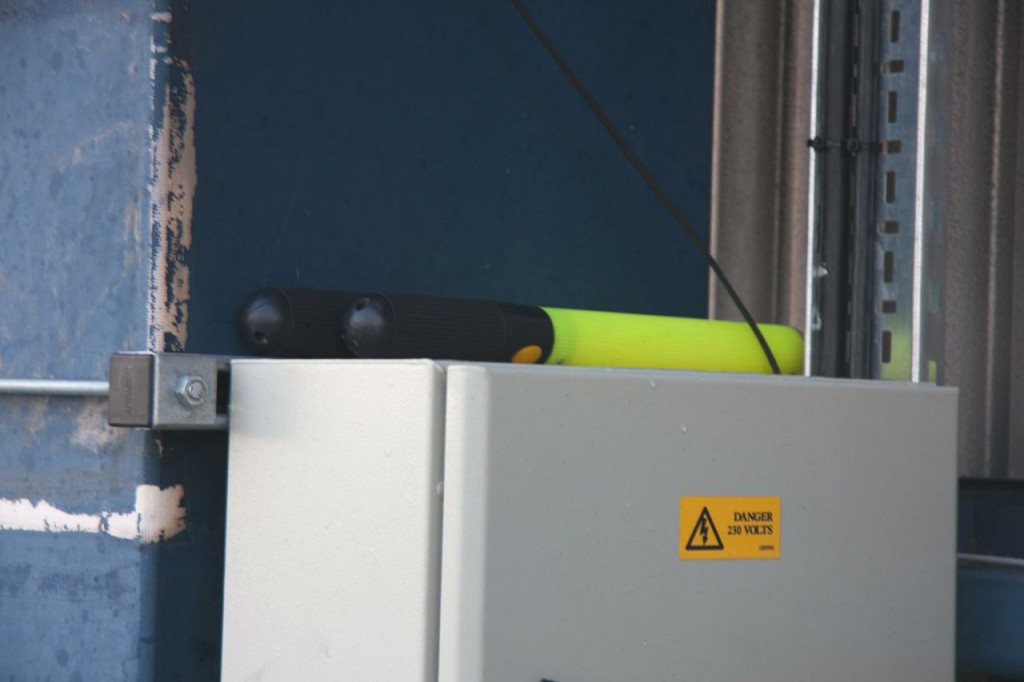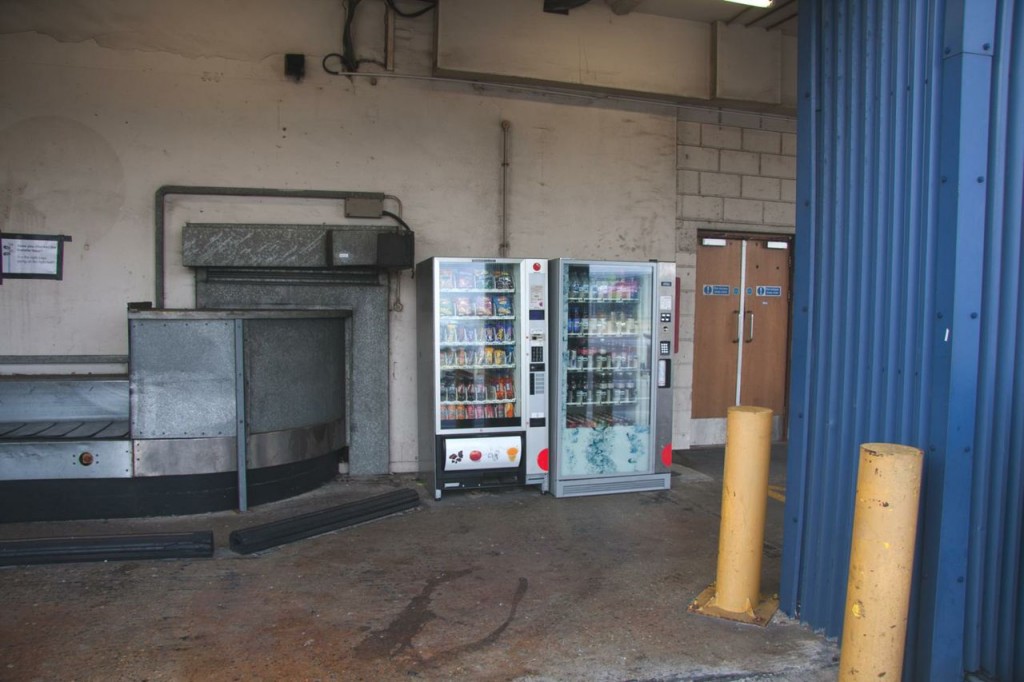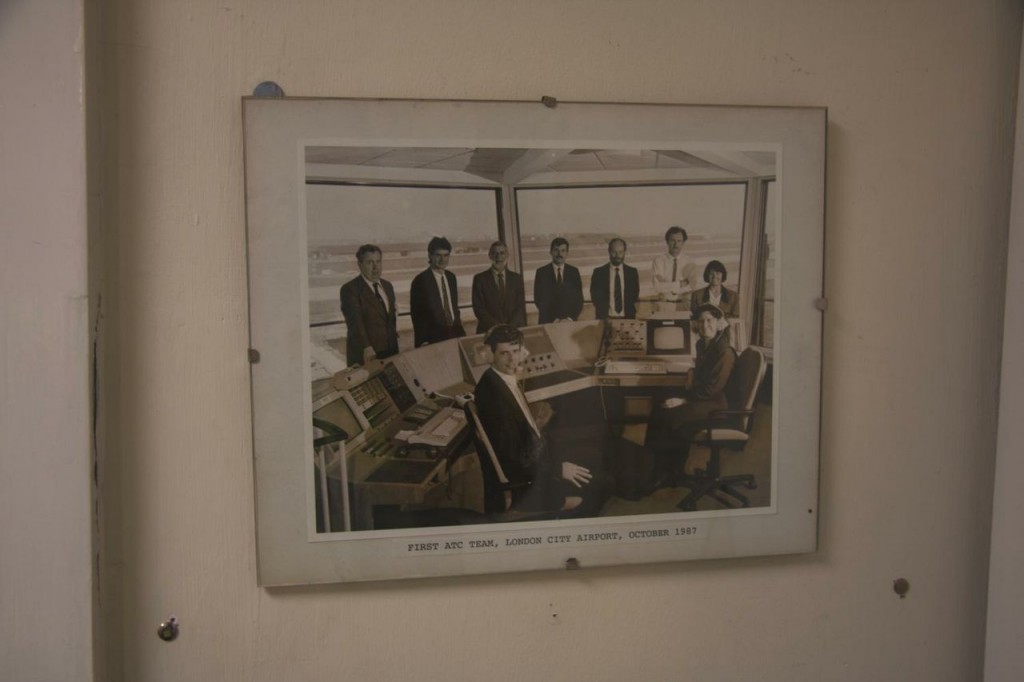Behind the Scenes: London City Airport – From the Tower
- Behind the Scenes: London City Airport: The Introduction
- Peak rush to London, aLoft ExCeL
- Morning time at LCY – Inspecting runway lights
- Ramp Operations
- At the JetCentre
- Ramp Walk 1
- Ramp Walk 2
- From the Tower (THIS SECTION)
- Watery Inspections with the Fire Service
- Leaving London and Final Thoughts
Control batons at rest.
After guiding around planes, everyone needs a drink or two…
After completing the ramp walk, I was escorted back to the Operation Centre, and we were on time to meet a representative of the London City Tower team who operate for NATS.
Up to the tower
We then proceeded upstairs towards an intermediate point where a safety briefing was given, as well as a list of do’s and do nots. At the request of the NATS, no photography is allowed – thus the camera and all communication devices remained off for this segment.
So sorry – no pictures from the tower!
As traffic had gone down from the morning rush (where London City Airport handles over 36 movements at peak), there was a serene calm in the place as the team were working away controlling planes as they taxied, took off and landed and issuing instructions to them.
Heading up the thin spiral staircase, the first thing you see are the people working the tower, and the which has a view from the both ends of the runway, across the apron and to the edge of the JetCentre.
The explanation of the roles they did and what each of their monitors showed them, and how that related to how traffic is handled – both in the ground, at 3000ft up (where City’s control height) and the relation to Heathrow Traffic (which is decending at 5000ft and above).
Citys control area is overlapped by six major fields nearby: Biggin Hill, Heathrow, Northholt, Stansted and Gatwick, with the Heathrow stacks over Lamborne (NE of Heathrow ), Biggin Hill (SE), Bovingdon, Oakham (SW) and Bovingdon (NW) – so its a very busy bit of air that the team work in.
There is of course the electronic version of the paper strip system which is interesting to see in use. The tower team at all times have two qualified controllers on the deck, allowing for an instant handover if something goes wrong. Both systems are set up the same as well so a controller can switch from system to system without any downtime.
The team have a wide vairty of aircraft to handle – as well as corperate jets, they also manage the following types of aircraft
- Airbus A318
- BAe146/AvroRJ Families
- BAe 41 JetStream
- ATR42/72 (and variants)
- DHC Dash 7
- Bombardier Dash 8/Q Series
- Dornier Fairchild Do328/328 JET
- Embarer ERJ-135, E-170, E190 (SR)
- Fokker 50, Fokker 70
- Saab 340, Saab 2000
All of which have to handle the very steep approaches both in and out of the airport at a 5.5 degree or greater glide-scope (compared to the 3 degree found at many other airports). And it only becomes apparent what this glide-scope is like when watching it from a tower with 6 miles of visibility – the plane literally pops from the cloud on a steep arrival.
It’s a massive responsibility to keep these people safe, and the calm and professionalism of this working crew showed through as I exited what is a very rare privilege to go to a live active tower.
A picture of the first ATC Team at London City Airport when it opening in 1987.
Coming up – Watery Inspections with the Fire Service
Disclosure: London City Airport kindly supplied a hotel room at aLoft ExCeL to me to assist in this visit. Some details and factual information has been provided by London City Airport Corporate Communications Department.
All opinions expressed within this trip are my own, represent my own personal thoughts and my observations during the visit.
You can find out more about London City Airport at http://www.londoncityairport.com/



